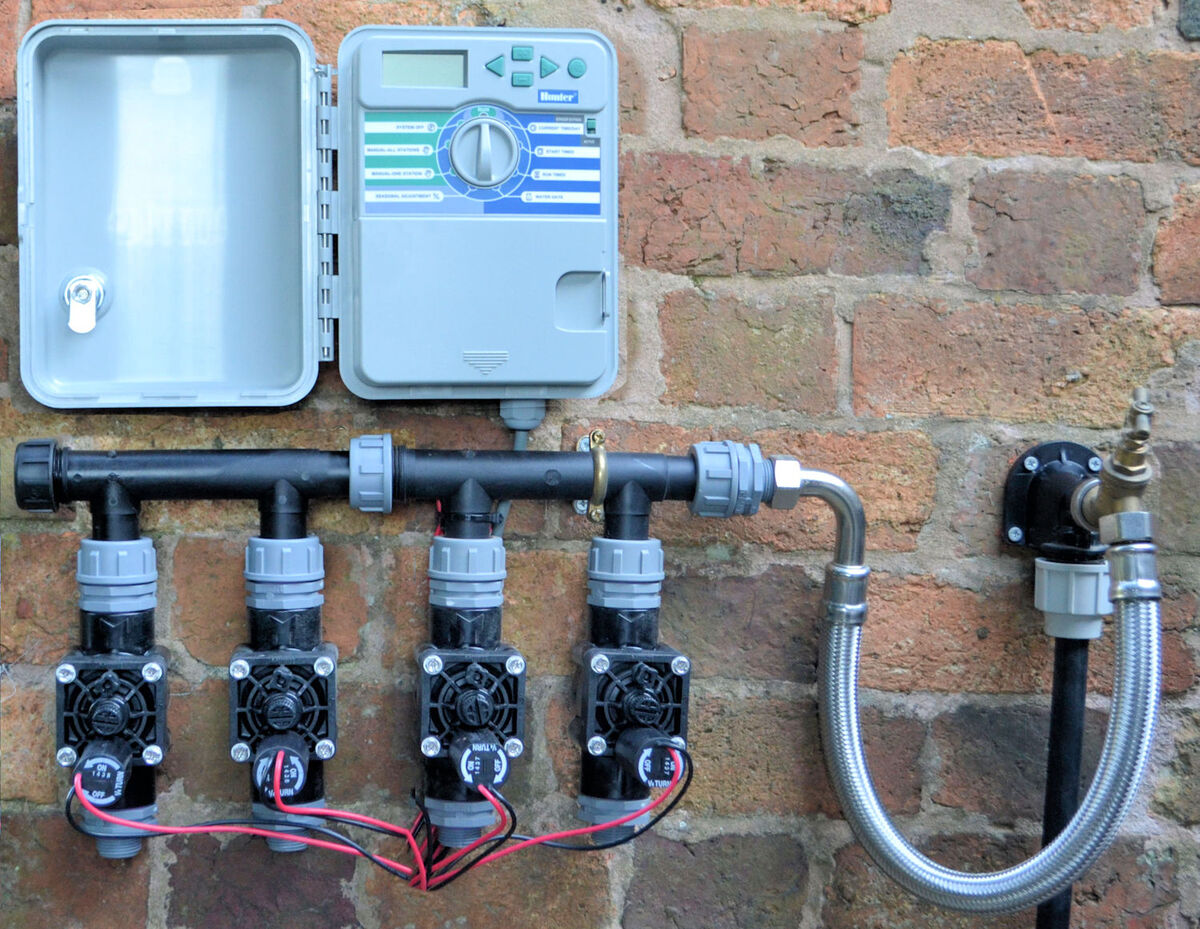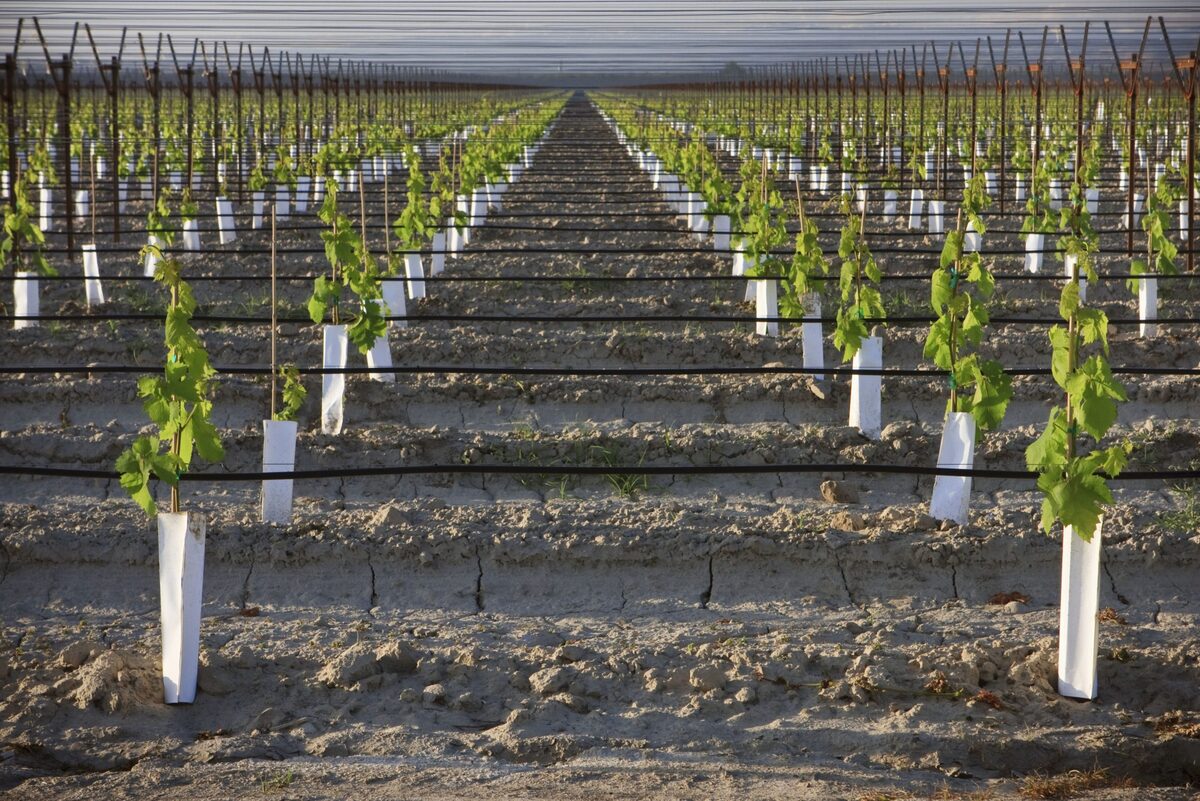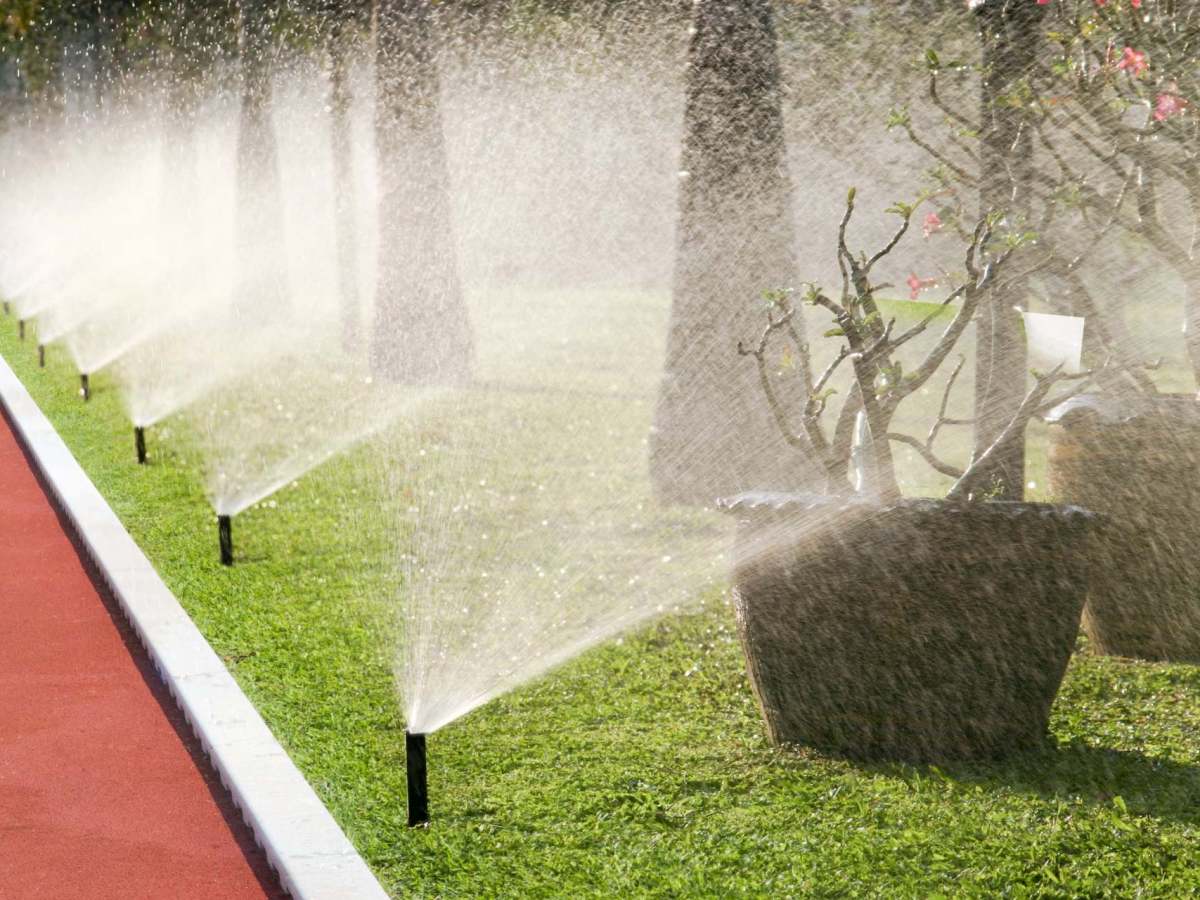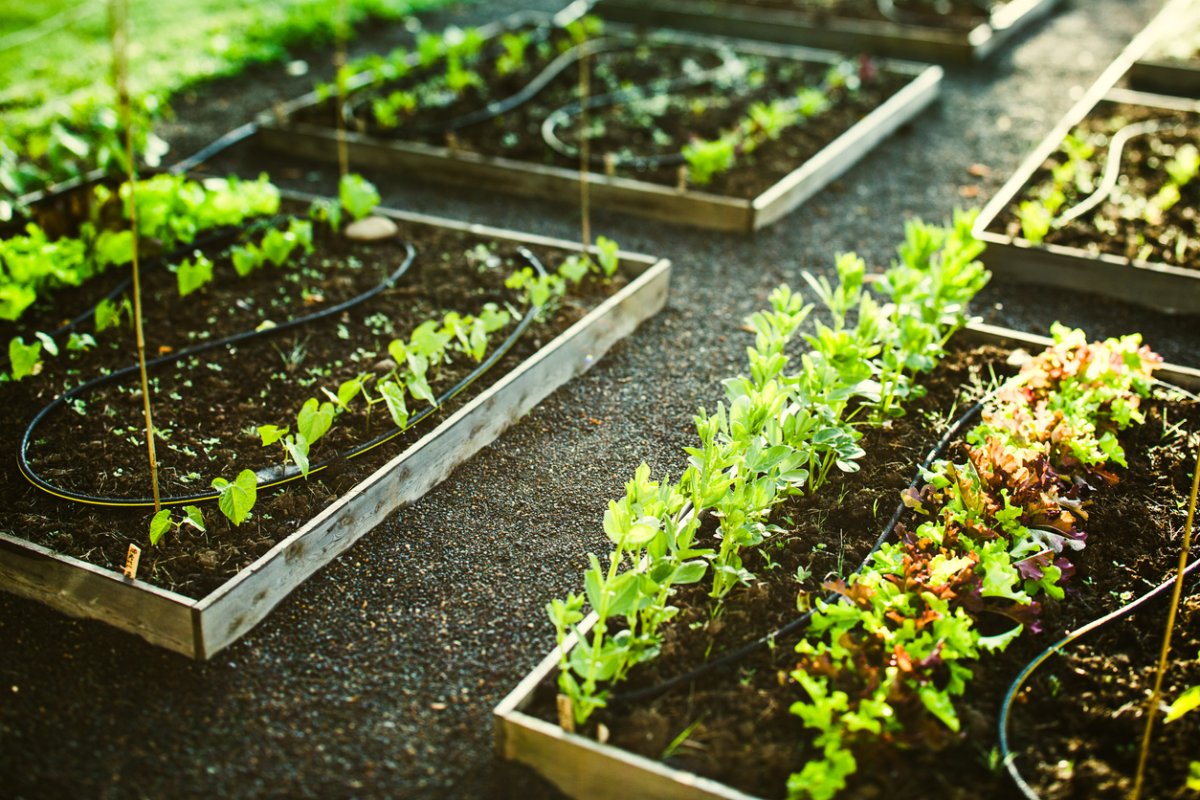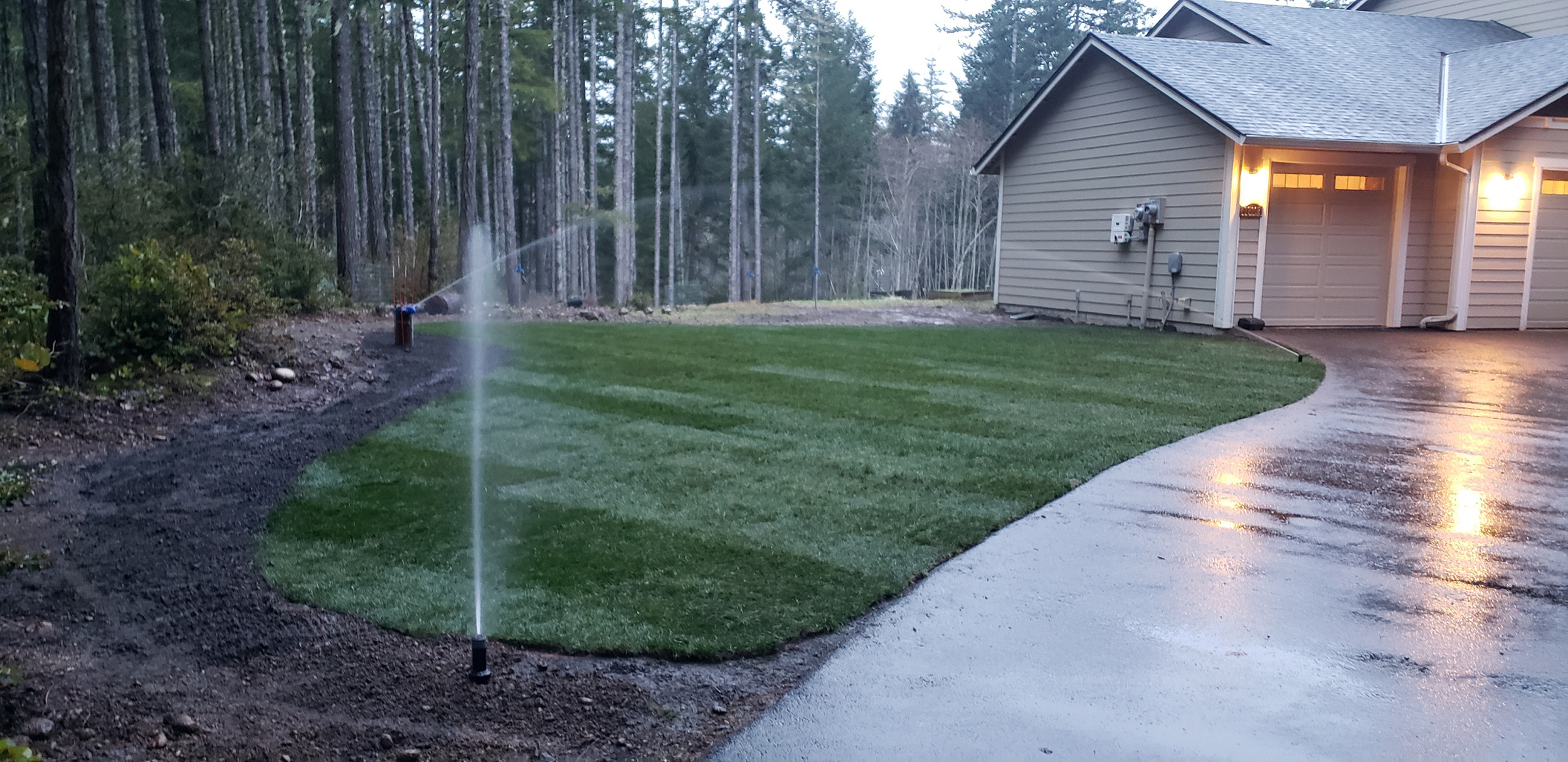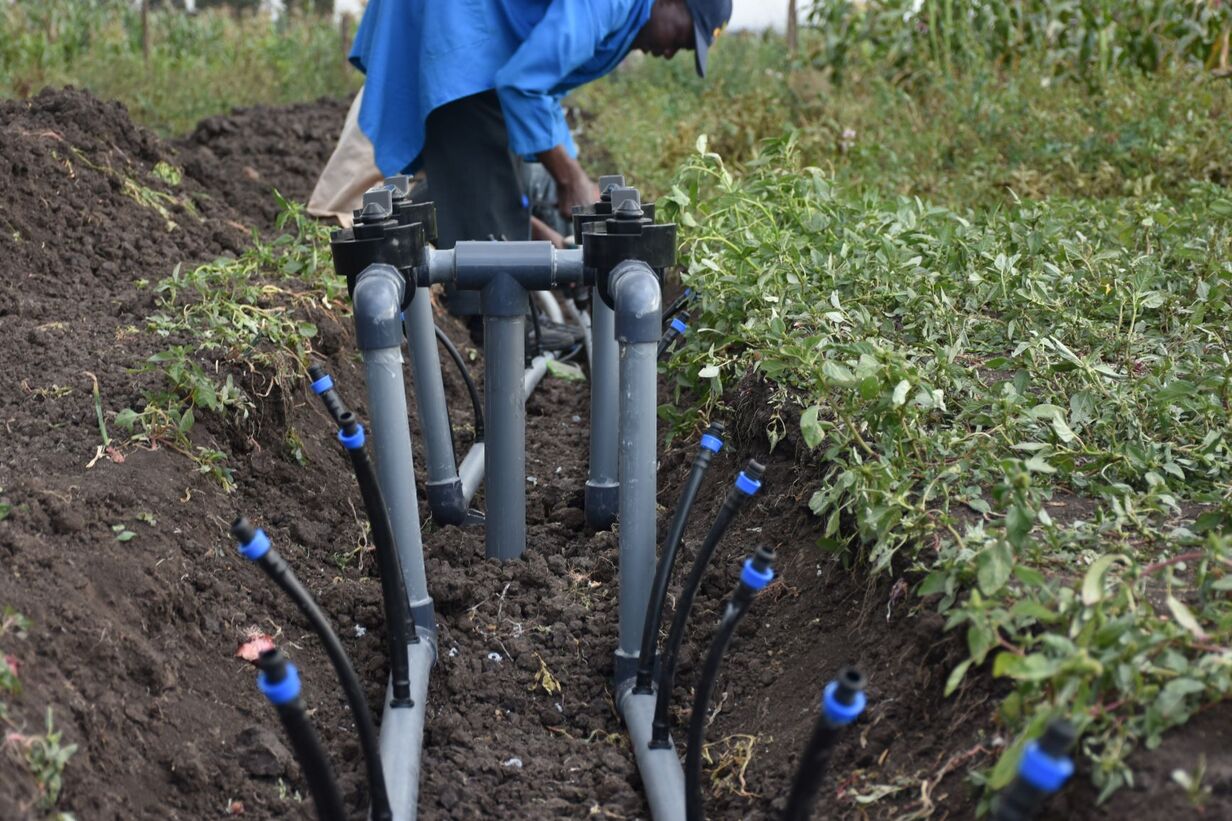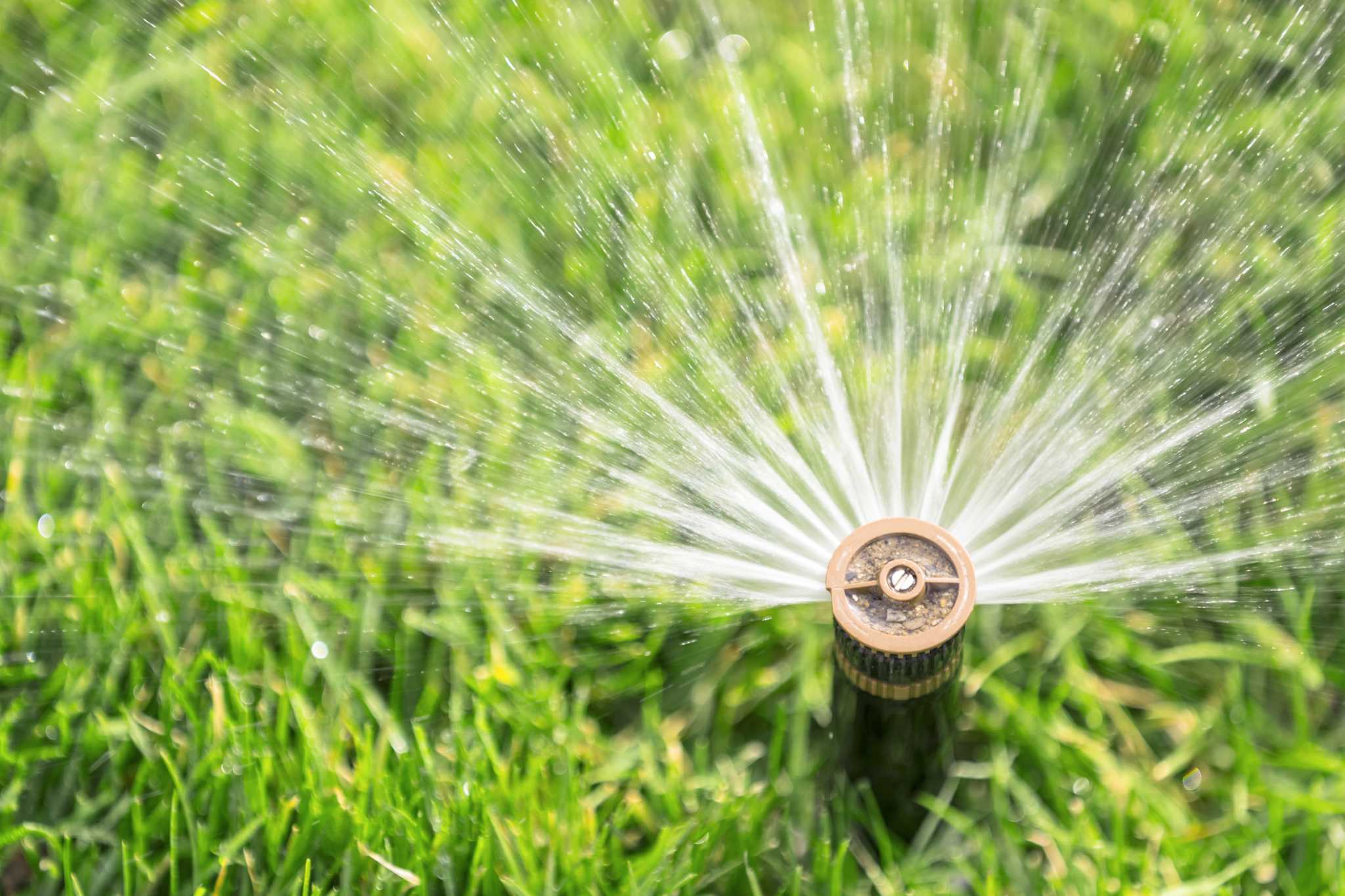Home>Gardening Basics>Tools and Equipment>How To Set Up A Greenhouse Irrigation System
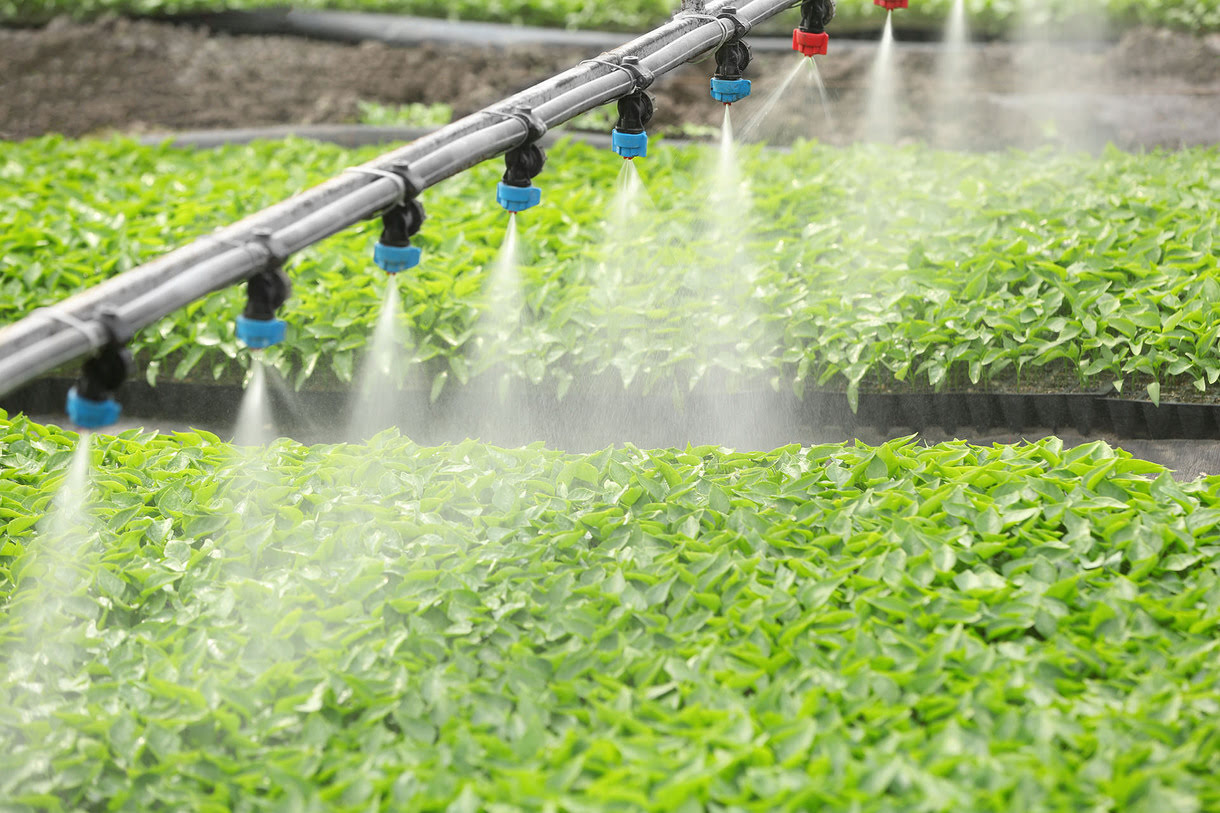

Tools and Equipment
How To Set Up A Greenhouse Irrigation System
Modified: January 22, 2024
Learn how to set up a greenhouse irrigation system using the right tools and equipment. Ensure your plants receive the proper water and nutrients they need to thrive.
(Many of the links in this article redirect to a specific reviewed product. Your purchase of these products through affiliate links helps to generate commission for Chicagolandgardening.com, at no extra cost. Learn more)
Table of Contents
Introduction
Welcome to the world of greenhouse gardening, where you can create the perfect environment to cultivate a wide range of plants and extend your growing season. However, to ensure the health and productivity of your plants, proper irrigation is essential. A greenhouse irrigation system offers a convenient and efficient way to deliver the right amount of water to your plants, keeping them hydrated and thriving.
A greenhouse is a controlled environment where factors like temperature, humidity, and light can be regulated to create ideal growing conditions. While the building itself provides shelter and protection, a reliable irrigation system is crucial to supply your plants with the necessary water they need to thrive. By automating the watering process, you can save time and ensure that your plants receive the correct amount of water at the right time.
Whether you are a seasoned greenhouse gardener or just starting out, incorporating an irrigation system into your setup can bring numerous benefits. It not only saves you the effort of hand-watering each plant but also provides a consistent water supply, even when you are not around.
Furthermore, a well-designed greenhouse irrigation system helps to optimize water usage, preventing both over and under watering. This is particularly important as water is a precious resource, and efficient irrigation practices contribute to water conservation and sustainability.
In this article, we will take a closer look at the benefits of a greenhouse irrigation system and guide you through the planning, design, selection, and installation process. We will also discuss the components and equipment needed for a well-functioning system, as well as maintenance and troubleshooting tips to keep your irrigation system running smoothly.
So, whether you aspire to grow beautiful flowers, cultivate fresh herbs, or produce high-quality fruits and vegetables, let’s dive into the world of greenhouse irrigation systems and discover how they can improve your gardening experience.
Benefits of a Greenhouse Irrigation System
A greenhouse irrigation system offers several advantages that can greatly enhance the success and productivity of your greenhouse garden. Let’s explore some of the key benefits:
- Consistent and Efficient Watering: One of the primary benefits of an irrigation system is its ability to deliver a consistent water supply to your plants. This ensures that they receive the right amount of water at regular intervals, promoting healthy growth and preventing under or over watering. Irrigation systems are designed to distribute water evenly across your greenhouse, optimizing water usage and reducing wastage.
- Time and Labor Savings: Hand-watering each plant individually can be a time-consuming and labor-intensive task, especially if you have a large greenhouse. With an irrigation system, you can automate the watering process and save valuable time and effort. Simply set the timer or program the system to water your plants at specific intervals, allowing you to focus on other essential gardening tasks.
- Flexibility and Convenience: Greenhouse irrigation systems offer flexibility and convenience, allowing you to tailor the watering schedule to meet the specific needs of your plants. You can adjust the frequency and duration of watering based on factors such as plant type, growth stage, and environmental conditions. Some advanced systems even offer remote control options, enabling you to monitor and adjust watering settings from anywhere using a mobile device or computer.
- Improved Plant Health and Growth: Proper watering is crucial for the health and growth of plants, and an irrigation system ensures that your plants receive water consistently and evenly. This helps to prevent water stress, root rot, and other related issues that can arise from inconsistent or excessive watering. With a well-maintained irrigation system, you can create an optimal growing environment for your plants, resulting in stronger, healthier, and more productive crops.
- Water Conservation: Another significant benefit of a greenhouse irrigation system is its ability to conserve water. Unlike traditional sprinkler systems or hand watering methods, which can lead to water wastage through runoff and evaporation, greenhouse irrigation systems are designed to deliver water directly to the root zone of the plants. This targeted approach minimizes water loss and maximizes efficiency, reducing your water consumption and promoting environmental sustainability.
By investing in a greenhouse irrigation system, you can enjoy these benefits and more, ensuring that your plants thrive in a well-regulated and efficient watering environment.
Planning and Design
Proper planning and thoughtful design are crucial steps in setting up an effective greenhouse irrigation system. Here are some key considerations to keep in mind:
- Assess Your Needs: Start by assessing your specific watering requirements. Consider factors such as the types of plants you intend to grow, their water needs, and the size and layout of your greenhouse. Understanding these needs will help you determine the appropriate irrigation method and system capacity.
- Irrigation Method: There are several irrigation methods to choose from, including drip irrigation, overhead sprinklers, and misting systems. Each method has its pros and cons, so consider factors such as plant type, water efficiency, and ease of installation and maintenance. Drip irrigation is commonly used in greenhouses due to its precision and water conservation benefits.
- Zoning: Divide your greenhouse into zones based on the water requirements of different plant species or areas. This allows you to tailor the watering schedule for each zone, ensuring that plants receive the right amount of water without waste. Zoning also helps isolate potential issues, making it easier to troubleshoot and make adjustments if needed.
- Water Source: Determine your water source and evaluate its quality. If you’re using well water or rainwater, consider filtration and purification systems to remove any impurities that could clog the irrigation system. If using tap water, consider water hardness and the potential for mineral buildup. Adjustments may be necessary to ensure the long-term health of your plants and the functionality of your irrigation system.
- Irrigation Schedule: Establish an irrigation schedule based on the water requirements of your plants and the environmental conditions in your greenhouse. Factors such as temperature, humidity, and plant growth stage can influence watering frequency and duration. Aim for a consistent schedule to avoid fluctuations in moisture levels and ensure optimal plant health.
- System Capacity: Calculate the water flow rate and system capacity needed based on the size of your greenhouse and the number of plants. Consider factors such as pressure requirements, pipe diameter, and emitter spacing for drip irrigation systems. It’s important to ensure that your irrigation system can deliver sufficient water to all areas of the greenhouse without compromising water pressure.
When designing your greenhouse irrigation system, it’s also beneficial to consult reputable suppliers or professionals with expertise in greenhouse gardening. They can provide guidance on system design, equipment selection, and installation best practices, ensuring that your system meets your specific needs for years to come.
Selecting the Right Irrigation Method
Choosing the right irrigation method for your greenhouse is a critical decision that can significantly impact the success of your gardening endeavors. Here are some popular irrigation methods to consider:
- Drip Irrigation: Drip irrigation is a widely used method in greenhouse gardening. It involves the use of a network of tubes and emitters that deliver water directly to the plant’s root zone. Drip irrigation provides precise water application, minimizing water loss through evaporation or runoff. This method is highly efficient, conserves water, and allows for easy zoning to meet the varying water needs of different plant species.
- Overhead Sprinklers: Overhead sprinklers distribute water through a network of sprinkler heads attached to pipes or risers. This method mimics natural rainfall, covering a larger area with water droplets. Overhead sprinklers are suitable for greenhouse setups with taller plants or those where uniform coverage is desired. However, this method may not be as water-efficient as drip irrigation and can increase humidity levels.
- Misting Systems: Misting systems create a fine mist of water droplets that are sprayed into the greenhouse environment. This method is commonly used for cooling and increasing humidity levels. However, misting systems may not be suitable as the primary irrigation method for plants requiring regular and precise watering.
- Ebb and Flow: The ebb and flow method, also known as flood and drain, involves periodically flooding the greenhouse floor with water and then draining it. Plants are placed on benches or tables, and the water rises and recedes, providing moisture to the roots. This method is particularly useful for potted plants and hydroponic systems, promoting efficient water and nutrient uptake. However, it may not be suitable for all types of greenhouse setups.
When selecting an irrigation method, consider the specific needs of your plants, the size and layout of your greenhouse, and your overall goals. Drip irrigation is often a popular choice due to its efficiency and flexibility. However, a combination of irrigation methods can also be used, depending on your requirements and the plants being cultivated.
In addition to the method itself, consider factors such as water pressure requirements, emitter spacing, and filtration systems to ensure the long-term functionality and effectiveness of your irrigation system. It is also important to regularly monitor and maintain your irrigation system to prevent clogging, leaks, or other issues that can impact its performance.
By carefully evaluating and selecting the right irrigation method for your greenhouse, you can create optimal growing conditions for your plants and ensure efficient water usage.
Calculating Water Requirements
Properly estimating and calculating the water requirements for your greenhouse plants is essential to ensure they receive the right amount of water for optimal growth. Here are some steps to help you calculate water requirements:
- Determine Crop Evapotranspiration (ET): Crop evapotranspiration is the combined process of water evaporation from soil and plant transpiration. It represents the water demand of your plants. The ET rate varies depending on factors such as plant type, growth stage, temperature, humidity, and light intensity. Consult local agricultural extension services, online resources, or professionals to obtain ET values specific to your crop.
- Calculate Daily Water Use: Once you have determined the crop evapotranspiration rate, multiply it by the reference evapotranspiration (ET0), which represents the water loss from a well-watered reference crop. ET0 values can be obtained from weather stations or online databases. Multiplying ET by ET0 will give you the daily water use rate for your plants.
- Consider Water Efficiency Factors: Keep in mind that not all water applied to the greenhouse will be utilized by the plants. Factors such as irrigation method, soil type, rooting depth, and drainage can affect water efficiency. Adjust your water requirements calculation to account for these factors and ensure accurate estimation.
- Account for Rainfall and External Factors: If you are relying on natural rainfall or other external water sources, factor this into your water requirements calculation. Subtract the amount of rainfall or external water received from your daily water use calculation to determine the amount of supplemental irrigation needed.
- Consider Environmental Conditions: Environmental conditions within the greenhouse can also affect water requirements. Factors such as temperature, humidity, and air circulation can impact evaporation rates and plant water needs. Monitor and adjust your watering schedule accordingly to account for these conditions.
- Monitor and Adjust: Regular monitoring of plant health and soil moisture levels is crucial to ensure that your watering calculations are accurate. Use moisture meters or conduct visual inspections to assess the moisture content of the soil. Make adjustments to your watering schedule as necessary to avoid under or over watering.
It is important to note that water requirements can vary significantly depending on various factors, including plant species, growth stage, and environmental conditions. Regular monitoring and observation of your plants will help you fine-tune your watering schedule and ensure that your greenhouse irrigation system provides the appropriate amount of water for optimal plant health and growth.
Components and Equipment
A greenhouse irrigation system consists of various components and equipment that work together to deliver water efficiently to your plants. Here are some essential components and equipment you will need:
- Water Source: Your irrigation system will require a reliable water source. This can be a well, municipal water supply, rainwater collection system, or a combination of sources. Ensure that your water source has sufficient pressure and flow rate to meet the needs of your irrigation system.
- Pump: A pump is necessary to provide the necessary pressure for water distribution. The size and power of the pump will depend on the size of your greenhouse, the irrigation method you are using, and the water flow requirements of your system.
- Pipes and Tubing: High-quality pipes and tubing are essential for transporting water from the source to the plants. Durable and UV-resistant materials like polyethylene (PE) or polyvinyl chloride (PVC) are commonly used. The size and layout of the pipes and tubing will depend on the scale and design of your greenhouse.
- Emitters and Sprinklers: Emitters and sprinklers are the devices that deliver water to the plants. Drip irrigation systems utilize emitters like drippers or micro-sprinklers, which release water directly at the root zone. Overhead sprinkler systems use sprinkler heads that distribute water in a wide pattern. Select the appropriate emitter or sprinkler type based on your irrigation method and the specific needs of your plants.
- Controllers or Timers: Controllers or timers are used to automate the irrigation schedule. They allow you to set specific watering times and durations, ensuring consistency and convenience. Advanced controllers may include features like soil moisture sensors or weather-based watering adjustments to optimize water usage.
- Filters and Filtration Systems: Filters are crucial for preventing clogging of emitters and sprinkler heads. Depending on your water source, you may need different types of filters to remove particles or sediments. Consider additional filtration systems like sand separators, screen filters, or disc filters to maintain the cleanliness of the water and protect your irrigation system.
- Fertilizer Injectors: Fertilizer injectors allow for the precise application of fertilizers or other liquid additives into the irrigation system. They ensure that plants receive the necessary nutrients for healthy growth. Fertilizer injectors can be manually operated or automated, depending on your preference and greenhouse setup.
- Pressure Regulators and Valves: Pressure regulators help control the water pressure within the irrigation system, preventing damage to the pipes and emitters. Valves are used to control the flow of water and divide the system into different zones. This allows for targeted watering and efficient water distribution.
When selecting components and equipment for your greenhouse irrigation system, opt for high-quality materials and reliable brands. Consider factors such as durability, compatibility, ease of installation, and maintenance requirements. Consulting experts in greenhouse irrigation or working with reputable suppliers can help ensure that you choose the right components and equipment for your specific needs.
Installation Process
The installation process of a greenhouse irrigation system involves several steps to ensure proper functionality and efficiency. Here is a general outline of the installation process:
- Design and Layout: Start by finalizing the design and layout of your irrigation system. Consider factors such as the size and layout of your greenhouse, the type of irrigation method you will be using, and the water requirements of your plants. Create a detailed plan that includes the placement of pipes, tubing, emitters, valves, and other components.
- Prepare the Water Source: Ensure that your water source is ready and accessible. Install any necessary filters or treatment systems to remove impurities that could clog the irrigation system. Connect the pump to the water source and test its functionality.
- Lay Pipes and Tubing: Install the pipes and tubing according to your design plan. Lay them along the rows or beds where your plants will be located. Ensure that the pipes are securely connected using appropriate fittings and connectors. Use clamps or stakes to hold the pipes in place and prevent them from shifting or moving.
- Install Emitters and Sprinklers: Attach the emitters or sprinklers to the pipes at designated intervals. Follow the manufacturer’s instructions for proper installation. Ensure that the emitters are positioned near the plants’ root zones for efficient water delivery. Test each emitter or sprinkler to verify that water is flowing correctly and adjust as needed.
- Set Up Controllers or Timers: Install and program the controllers or timers according to your desired watering schedule. Connect them to the water source and ensure that they are functioning correctly. Adjust the settings if necessary to ensure proper timing and duration of watering cycles.
- Test the System: Run a thorough test of the system to ensure that all components are working properly. Check for any leaks, clogs, or uneven water distribution. Verify that the emitters or sprinklers are providing adequate water coverage and adjust their positions if needed. Test the system under normal operating conditions to ensure that water flow, pressure, and timing are all functioning as intended.
- Adjust and Fine-Tune: Monitor the performance of the irrigation system closely during the initial stages. Make necessary adjustments to the watering schedule, emitter positions, or system settings based on the needs of your plants and any observed deficiencies. Regularly check and maintain the system to prevent any issues that could affect its functionality.
During the installation process, it can be helpful to refer to instructional manuals, online resources, or seek guidance from experts in greenhouse irrigation. They can provide valuable insights and advice to ensure that your installation is done correctly and efficiently.
Remember that a well-installed irrigation system is the foundation for successful greenhouse gardening. By following these steps and paying attention to detail, you can set up a reliable and effective irrigation system that will support the health and growth of your plants.
Maintenance and Troubleshooting
Maintaining and troubleshooting your greenhouse irrigation system is crucial to ensure its proper functioning and longevity. Regular maintenance will help prevent issues and ensure that your plants receive the water they need. Here are some maintenance and troubleshooting tips to keep in mind:
- Inspect the System: Regularly inspect your irrigation system for any leaks, clogs, or damaged components. Check the pipes, tubing, emitters, valves, and connectors for signs of wear or damage. Look for any signs of water pooling, uneven water distribution, or reduced water pressure.
- Clean Filters: Clean the filters regularly to prevent clogging and maintain optimal water flow. Remove and rinse any sediment or debris that may have accumulated in the filters. Replace worn-out or damaged filters as necessary.
- Check for Leaks: Inspect all connections and joints for leaks. Even small leaks can lead to water wastage and decreased system efficiency. Tighten loose fittings or replace damaged seals to fix leaks. Monitor the system closely during operation to identify any new leaks that may arise.
- Monitor Water Pressure: Ensure that the water pressure in the system remains within the recommended range for effective operation. Use pressure gauges to monitor and adjust as needed. High or low water pressure can affect the performance of emitters or sprinklers, leading to uneven watering.
- Perform Regular Flushes: Over time, mineral deposits or algae growth can accumulate in the irrigation system, affecting its performance. Perform regular flushes to remove these deposits and maintain optimal water flow. Flush the system with clean water or use appropriate cleaning solutions as recommended by the manufacturer.
- Monitor Soil Moisture: Regularly monitor the moisture levels in the soil to ensure that your plants are receiving adequate water. Adjust the watering schedule or duration if necessary based on the observed moisture levels and the needs of your plants. Use moisture meters or conduct manual inspections to check soil moisture content.
- Address Issues Promptly: If you notice any problems with your irrigation system, such as uneven watering, reduced water flow, or irregular operation, address them promptly. Investigate the cause of the issue and take appropriate action. This may involve adjusting emitters, replacing damaged components, or recalibrating the system.
- Seek Professional Help: If you encounter complex or persistent issues with your irrigation system, it may be beneficial to seek professional assistance. Experienced irrigation experts can diagnose and resolve problems efficiently, saving you time and preventing further damage to the system.
Regular maintenance and prompt troubleshooting will help keep your greenhouse irrigation system in optimal condition. By addressing potential issues early on and ensuring regular upkeep, you can maximize the efficiency of your irrigation system and provide your plants with the water they need to thrive.
